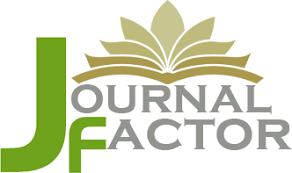A Preliminary Study on pH Changes of Storage Solution and Weight Changes of Ionomer Cements: Influence of Phosphate Content
DOI:
https://doi.org/10.54361/ljmr.v14i2.01Abstract
This in vitro study was carried out to investigate the impact of varying phosphate fractions on pH changes of storage solution of artificial saliva and weight changes for four experimental ionomer cements at specific time intervals. Three disc-form specimens for each composition were prepared, weighed-out (initial weight = W0) and then immersed individually in 10 ml of artificial saliva (initial pH = 6.5) for the experimental periods at 37oC. At 7, 14 and 28 days, the final pH values of artificial saliva solutions were measured using a pH electrode meter. The discs were immediately collected, dried and re-weighted (final weight = W1) to calculate the weight changes by percentage. All tested cements were bringing the pH slightly down towards the acidity level after 7 days, and then the values became relatively stable when the time progressed further up to 28 days. As well, the data showed that the less phosphate was added to the basic ionomer glasses, the less in fluence on pH rate was evaluated. A linear relationship between the pH values as a function of phosphate content was obtained at all time points. In terms of weight changes, there was a moderate increase in the mass during the entire experimental period. The extent of the changes in pH values of artificial saliva and in specimen's weights led to the conclusion that the ionomer glass components have a crucial role in controlling the material behaviour. Further studies have to be done
Downloads
References
Smith B., Wright P. and Brown D. (1994)The clinical handling of materials.2nd ed. Oxford, Butterworth-Heinemann.
Sidhu S.K. and Nicholson J.W.(2016) A review of glass-ionomer cements for clinical dentistry. Journalof Functional Biomaterials, 7(3):16.
Wood D. and Hill R.(1991) Structure-property relationships in ionomer glasses. ClinicalMaterials, 7(4):301-12.
Nicholson J.W.(1998) Chemistry of glass-ionomer cements: a review. Biomaterials, 19(6):485-94.
Wilson A.D. and Nicholson J.W.(2005) Acid-base cements: their biomedical and industrial applications.Cambridge University Press.
Wasson E. and Nicholson J.(1993) New aspects of the setting of glass-ionomer cements. Journal of DentalResearch, 72(2):481-3.
Griffin S. and Hill R.(1999) Influence of glass composition on the properties of glass polyalkenoate cements. Part I: influence of aluminium to silicon ratio. Biomaterials, 20(17):1579-86.
Hill R. and Wilson A.(1988)Some structural aspects of glasses used in ionomer cements. Glass Technology, 29(4):150-8.
Matsuya S., Maeda T. and Ohta M.(1996) IR and NMR analyses of hardening and maturation of glass-ionomer cement.Journal of Dental Research, 75(12):1920-7.
Nicholson J.(2010) Glass ionomer dental cements: update. Materials Technology, 25(1):8-13.
Kirkpatrick R.J. and Brow R.K.(1998) Nuclear magnetic resonance investigation of the structures of phosphate and phosphate-containing glasses: a review. Solid State NuclearMagneticResonance, 5(1):9-21.
Zainuddin N., Karpukhina N., Hill R.G. and Law R.V.(2009) A long-term study on the setting reaction of glass ionomer cements by 27Al MAS-NMR spectroscopy. Dental Materials, 25(3):290-5.
Griffin S. and Hill R.(2000) Influence of glass composition on the properties of glass polyalkenoate cements. Part II: influence of phosphate content. Biomaterials, 21(4):399-403.
Aliping‐McKenzie M., Linden R. and Nicholson J.(2004) The effect of Coca‐Cola and fruit juices on the surface hardness of glass–ionomers and ‘compomers’.Journalof Oral Rehabilitation, 31(11):1046-52.
Hill R., Stamboulis A., Law R., Clifford A., Towler M. and Crowley C.(2004) The influence of strontium substitution in fluorapatite glasses and glass-ceramics. Journalof Non-CrystalineSolids, 336(3):223-9.
Ten Cate J., Exterkate R. and Buijs M.(2006) The relative efficacy of fluoride toothpastes assessed with pH cycling. Caries Research, 40(2):136-41.
Wasson E.A and Nicholson J.W.(1990) A study of the relationship between setting chemistry and properties of modified glass‐poly (alkenoate) cements. BritishPolymerJournal, 23(1‐2):179-83.
Czarnecka B., Limanowska-Shaw H., Nicholson J.W.(2002) Buffering and ion-release by a glass-ionomer cement under near-neutral and acidic conditions. Biomaterials, 23(13):2783-8.
Aliping-McKenzie M., Linden R. and Nicholson J.(2003) The effect of saliva on surface hardness and water sorption of glass–ionomers and “compomers”. Journal of Materials Science: Materials in Medicine,14(10):869-73.
Larsen I.B. and Munksgaard E.G.(1991) Effect of human saliva on surface degradation of composite resins. European Journal of Oral Sciences, 99(3):254-61.
Ngo H.C., Mount G., Mc Intyre J., Tuisuva J. and Von Doussa R.(2006) Chemical exchange between glass-ionomer restorations and residual carious dentine in permanent molars: an in vivo study. Journal of Dentistry,34(8):608-13.
Dawes C.(2003) What is the critical pH and why does a tooth dissolve in acid?. Journalof the Canadian Dental Association, 69(11):722-5.
Anderson P., Hector M. and Rampersad M. (2001) Critical pH in resting and stimulated whole saliva in groups of children and adults. International Journal of Paediatric Dentistry, 11(4):266-73.
Nicholson J.W., Czarnecka B. and Limanowska-Shaw H.(1999) A preliminary study of the effect of glass-ionomer and related dental cements on the pH of lactic acid storage solutions. Biomaterials, 20(2):155-8.
Nicholson J.W., Aggarwal A., Czarnecka B. and Limanowska-Shaw H.(2000) The rate of change of pH of lactic acid exposed to glass-ionomer dental cements. Biomaterials, 21(19):1989-93.
Stephan R.M. (1940) Changes in hydrogen-ion concentration on tooth surfaces and in carious lesions. The Journal ofthe AmericanDental Association, 27(5):718-23.
Hojo S., Takahashi N. and Yamada T. (1991) Acid profile in carious dentin. Journal ofDental Research, 70(3):182-6.
Ray N.H.(1978) Inorganic polymers. Academic Press.
Nicholson J.(1998) Studies in the setting of polyelectrolyte cements: Part VII The effect of divalent metal chlorides on the properties of zinc polycarboxylate and glass–ionomer dental cements.Journal of Materials Science: Materials in Medicine, 9(5):273-7.
Kanchanavasita W., Anstice H. and Pearson G.J. (1997)Water sorption characteristics of resin-modified glass-ionomer cements. Biomaterials, 18(4):343-9.
Preetha A. and Banerjee R. (2005)Comparison of artificial saliva substitutes. Trends Biomaterials and Artificial Organs, 18(2):178-86.
Edgar W. and Higham S. (1995) Role of saliva in caries models. Advances inDentalResearch, 9(3):235-8.
Leung V-H. and Darvell B.(1997) Artificial salivas for in vitro studies of dentalmaterials. Journal ofDentistry, 25(6):475-84.
Downloads
Published
Issue
Section
License
Copyright (c) 2020 Rawan M. Albeshti (Author)

This work is licensed under a Creative Commons Attribution-NonCommercial-NoDerivatives 4.0 International License.
Open Access Policy
Libyan journal of medical Research (LJMR).is an open journal, therefore there are no fees required for downloading any publication from the journal website by authors, readers, and institution.
The journal applies the license of CC BY (a Creative Commons Attribution 4.0 International license). This license allows authors to keep ownership f the copyright of their papers. But this license permits any user to download , print out, extract, reuse, archive, and distribute the article, so long as appropriate credit is given to the authors and the source of the work.
The license ensures that the article will be available as widely as possible and that the article can be included in any scientific archive.
Editorial Policy
The publication of an article in a peer reviewed journal is an essential model for Libyan journal of medical Research (LJMR). It is necessary to agree upon standards of expected ethical behavior for all parties involved in the act of publishing: the author, the journal editorial, the peer reviewer and the publisher.
Any manuscript or substantial parts of it, submitted to the journal must not be under consideration by any other journal. In general, the manuscript should not have already been published in any journal or other citable form, although it may have been deposited on a preprint server. Authors are required to ensure that no material submitted as part of a manuscript infringes existing copyrights, or the rights of a third party.
Authorship Policy
The manuscript authorship should be limited to those who have made a significant contribution and intellectual input to the research submitted to the journal, including design, performance, interpretation of the reported study, and writing the manuscript. All those who have made significant contributions should be listed as co-authors.
Others who have participated in certain substantive aspects of the manuscript but without intellectual input should only be recognized in the acknowledgements section of the manuscript. Also, one of the authors should be selected as the corresponding author to communicate with the journal and approve the final version of the manuscript for publication in the LJMR.
Peer-review Policy
- All the manuscripts submitted to LJMR will be subjected to the double-blinded peer-review process;
- The manuscript will be reviewed by two suitable experts in the respective subject area.
- Reports of all the reviewers will be considered while deciding on acceptance/revision or rejection of a manuscript.
- Editor-In-Chief will make the final decision, based on the reviewer’s comments.
- Editor-In-Chief can ask one or more advisory board members for their suggestions upon a manuscript, before making the final decision.
- Associate editor and review editors provide administrative support to maintain the integrity of the peer-review process.
- In case, authors challenge the editor’s negative decision with suitable arguments, the manuscript can be sent to one more reviewer and the final decision will be made based upon his recommendations.











